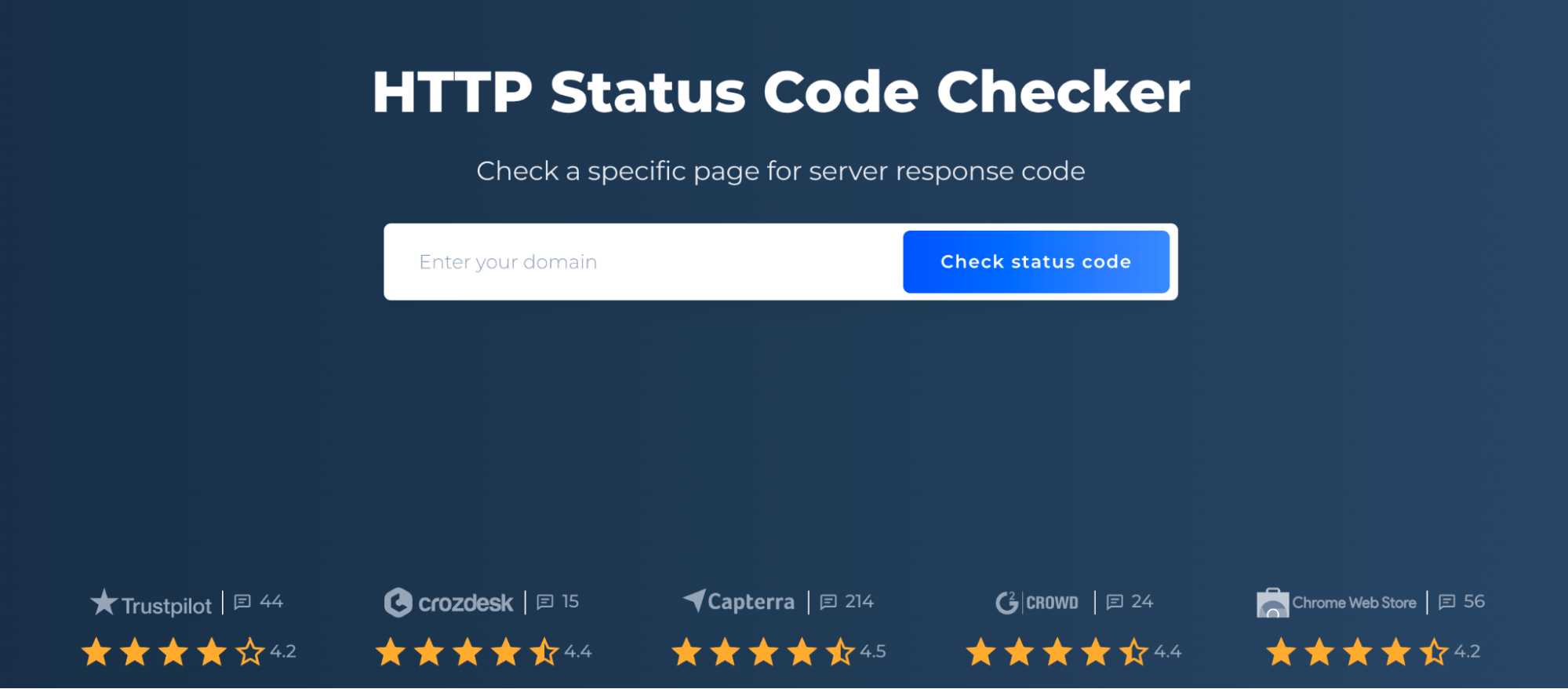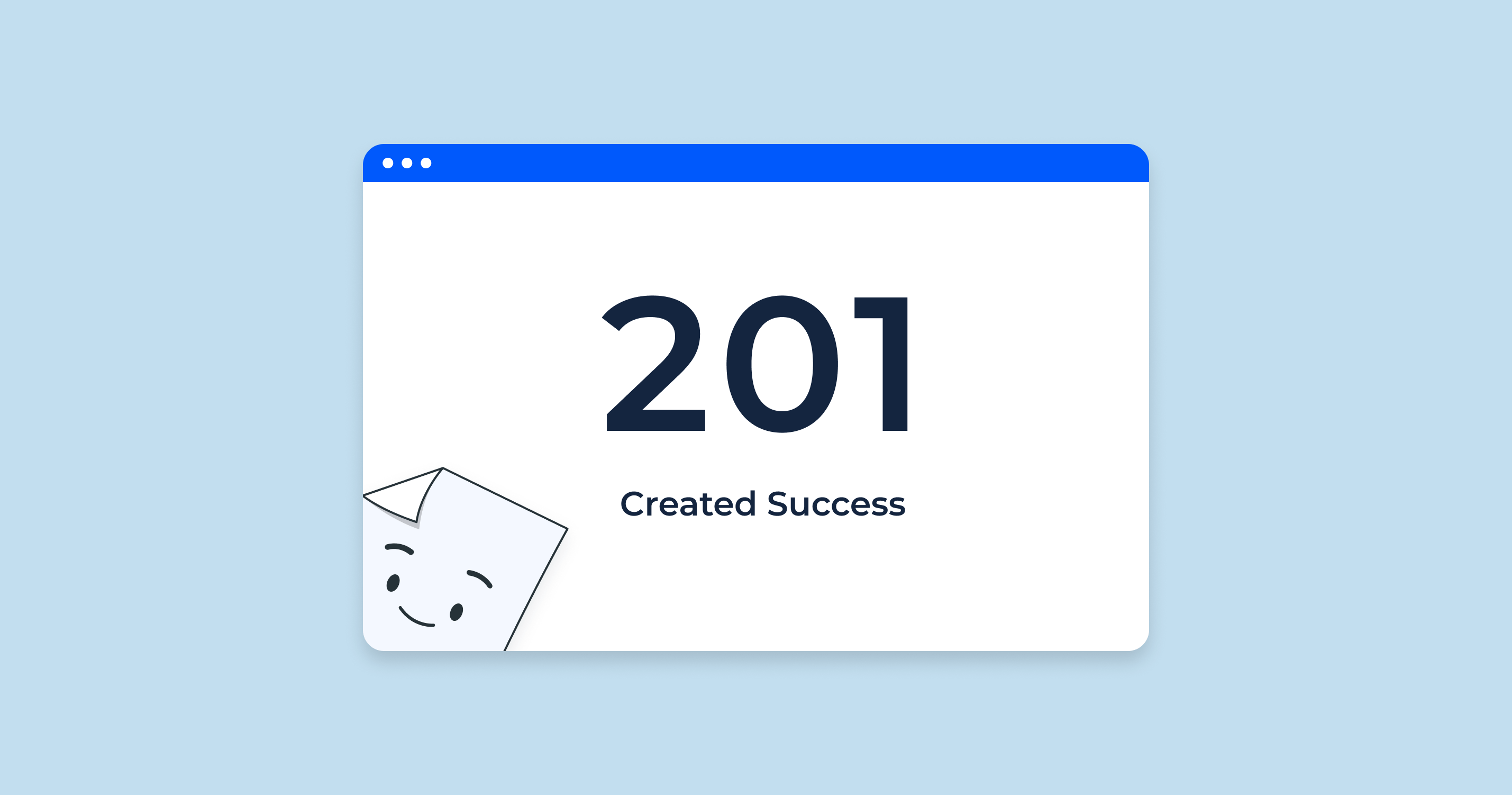What Is a 201 Status Code?
The 201 status code is an HTTP response status code that indicates a request was successful and has led to the creation of a resource. In simpler terms:
“201 Created”. The request has been fulfilled, and a new resource has been created as a result.
It’s typically used in response to HTTP POST requests that result in the creation of a new resource on the server, but can also be applicable to PUT requests if it leads to the creation of a new entity.
Here are some scenarios where the 201 status code might be utilized:
APIs & Web Services
User Registration. When a new user signs up on a platform, the backend might respond with a 201 after successfully creating a new user record in the database.
Adding Items. In e-commerce platforms or content management systems, when a new product or a new article is added, the API might return a 201 status.
Data Collection Platforms. For services that collect data, such as survey platforms or data logging services, a new data entry might trigger a 201 response.
File Uploads
Document Platforms. On platforms where users can upload documents, a successful upload that results in the saving/storage of a new file might return a 201.
Media Hosting. Sites where users can upload photos, videos, or other media. Upon successful upload and storage, a 201 status might be returned.
Social Media Platforms
New Posts. When a user submits a new post or tweet, the platform might respond with a 201 after the post has been successfully created.
Comments. Similarly, adding a comment to an existing post might yield a 201 status upon successful creation.
Forum & Discussion Platforms
New Threads. When a user starts a new discussion thread, the platform might return a 201 status to indicate that the thread has been created.
Replies. Replying to a thread might also result in a 201 status if the reply is successfully saved.
Databases
New Entries. In web applications where the backend directly interacts with databases, a new entry to the database (e.g., a new order, a new booking, a new contact) might lead the server to respond with a 201.
Webhooks & Integrations
Event Creation. For platforms that support webhooks to trigger certain actions in third-party services, a successful trigger leading to the creation of an event in the third-party service might yield a 201 response.
IoT & Device Networks:
Data Reporting. Internet of Things (IoT) devices that report data back to a central server might receive a 201 status code when they successfully send and record new data entries.
It’s important to note that while the 201 indicates successful resource creation, the exact nature of the “resource” can vary widely based on the application’s context. In web development, especially in the context of RESTful services, the emphasis is on the correct semantic use of HTTP status codes, and 201 Created provides valuable feedback about the result of an operation.
201 Status Code Impacts on SEO
The 201 Created status code, however, is not one that’s commonly discussed in standard SEO practices, mainly because typical user-agent interactions with websites via browsers don’t often result in the creation of new resources.
Nevertheless, there are potential impacts and considerations to understand:
| Rarely Encountered by Crawlers | Most interactions search engine crawlers have with websites are to fetch existing content. The 201 status code would only be relevant to crawlers if they were somehow involved in creating content, which is not typical behavior for search engines like Google or Bing. |
| Indication of Successful Resource Creation | If, in some niche scenario, a search engine botdoes encounter a 201 status code, it would understand that a new resource was successfully created as a result of the request. However, this does not necessarily mean the crawler will index this new resource immediately. |
| No Direct Ranking Impact | There’s no indication that receiving a 201 status code would have any direct effect on search engine rankings. SEO rankings are influenced by factors like content quality, backlinks, user experience, and technical optimizations. A 201 status code in itself does not address these factors. |
| Potential for Misconfigurations | If a website or server is mistakenly set up to return a 201 status code for typical GET requests or for requests to access existing content, this could confuse search engines. It’s crucial to ensure that status codes are appropriately set up and returned. |
| Consideration for Web Applications | Modern web applications that rely on user-generated content or interactions (like forums, review sites, etc.) might utilize the 201 status code more frequently. In these cases, while the status code might not directly impact SEO, it’s an indication of active user engagement, which can indirectly benefit SEO through fresh content and increased user interaction. |
| Relevance in API Documentation | If you have an API and its documentation available online, detailing the various responses (including a 201 status code) can be beneficial. Properly documented APIs with clear responses can be valuable for developers, and ensuring these pages are accessible and indexed can drive relevant organic traffic. |
| Redirects and Follow-Up Actions | If a 201 status code is followed by a redirect to the newly created resource, ensuring that the redirect is SEO-friendly (e.g., using a 301 or 302 status code appropriately) is crucial. |
In conclusion, while the 201 status code doesn’t have a direct impact on SEO in the traditional sense, ensuring that it’s used correctly and understanding its context can help maintain a healthy and well-functioning website or application, which indirectly supports SEO efforts.
Troubleshooting and solving issues related to the 201 status code
201 has a specific function: it signals the successful creation of a resource. However, like with any other status code, there can be issues and nuances that webmasters and developers need to be aware of. Let’s dive into some of the common troubleshooting scenarios related to the 201 code.
Unexpected 201 Responses
Some servers or configurations might mistakenly return a 201 code when no resource has been created.
Inconsistent API Responses
When developing APIs, sometimes a resource might be created, but a different status code (like 200 OK) is returned instead of 201.
Delayed 201 Responses
The server takes too long to create a new resource, leading to user impatience or the perception that the operation has failed.
201 Responses Without Location Headers
The HTTP specification suggests that a Location header be provided with a 201 response to indicate where the newly created resource can be found.
Mismatched Content Responses
Sometimes, while the server correctly returns a 201 status code, the content of the response does not correctly detail the created resource.
Redundant 201 Responses
Repeated or unintended requests lead to multiple identical resources being created, each time returning a 201 status code.
By following these troubleshooting steps and corresponding fixes, developers and webmasters can ensure the 201 code is used correctly and efficiently within their systems.
HTTP Status Code Checker for Identifying HTTP 201 Status Codes

HTTP Status Code Checker is an invaluable tool for webmasters and SEO professionals aiming to understand the response codes their websites return. This tool efficiently crawls through web pages to provide accurate information on the status codes associated with each page or resource. When it comes to identifying 201, SiteChecker.pro offers a streamlined solution.
By inputting a website URL into the HTTP Status Code Checker, the tool will quickly evaluate and report back with various HTTP status codes, including the sought-after 201 ‘Created’ status. This feature is particularly useful for developers and web administrators deploying new web pages or APIs who want to confirm that resources are being created successfully. This immediate feedback aids in ensuring that the web infrastructure is functioning as intended.
Moreover, by identifying 201 status codes with SiteChecker.pro, users can gain insights into potential issues or inconsistencies within their site or application. It helps web professionals maintain optimal site health, ensuring that pages respond with the intended status codes, enhancing user experience, and adhering to the best SEO practices.
By leveraging SiteChecker.pro, one can navigate the digital landscape with greater confidence and precision.
Conclusion
The 201 HTTP status code represents “Created” and is used predominantly in APIs to signify successful resource creation. While not commonly encountered in typical SEO contexts, it’s crucial for webmasters and developers to understand and use it correctly to ensure optimal site function.
Tools like SiteChecker.pro can assist in identifying the 201 status code, ensuring websites adhere to best practices. Proper implementation and troubleshooting are key to maintaining website health and user experience.





